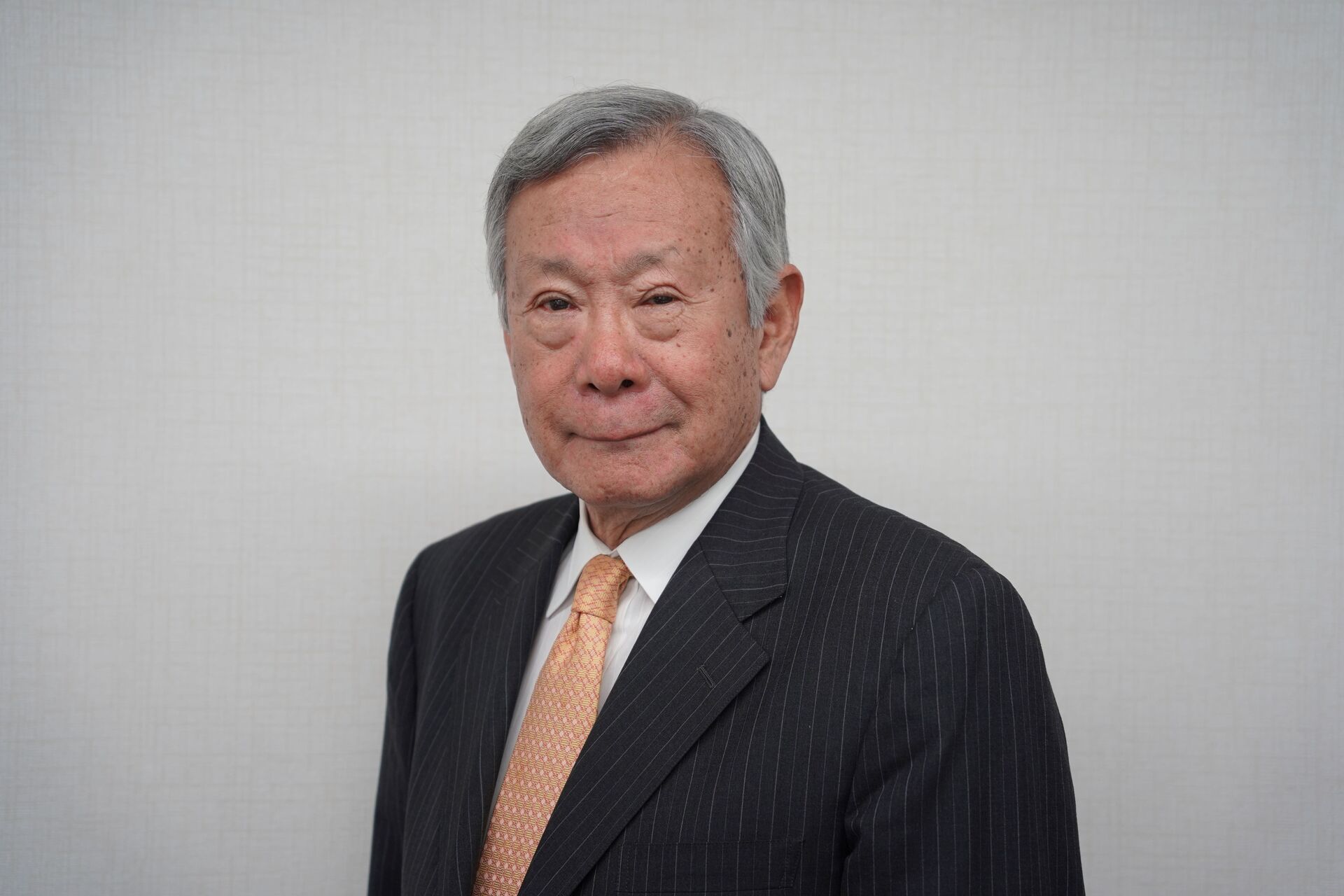Article
From retirement to presidency, Yutaka Morohoshi's vision to internationalise JGTO
From retirement to presidency, Yutaka Morohoshi's vision to internationalise JGTO

At 77, Yutaka Morohoshi had settled into a comfortable routine, dividing his time between Japan and Australia for over a decade. His well-earned retirement seemed set to continue indefinitely.
Yet fate had other plans. In March, an unexpected proposition emerged—the presidency of the prestigious Japan Golf Tour Organization (JGTO).
This opportunity to shape the future of Japanese men's professional golf proved irresistible to Morohoshi, pulling him from the sidelines back into the heart of the sport he loved.
"That was totally unexpected. It wasn't something that I even dreamed about. I didn't think about it at all. It just fell upon me out of nowhere and really surprised me," said Morohoshi.
He continued: "The former chairman of Japan's PGA, Masahiro Kuramoto, gave me a call and asked if I would like to come back to the board of JGTO. "I asked, 'What does it entail?' I live half the year outside Japan, so I won't be able to do much here in Japan. Well, he said, 'You know, there's only like four or five board meetings a year, and we can do it remotely'.
"I thought, okay sure. Then, lo and behold, without me knowing anything about it, I was driving my car on the way to the first board meeting when the phone rang. It was Kuramoto and he said, 'You're going to be the chairman and CEO.' What? I almost crashed my car! But that's how it happened."
Morohoshi, who previously served as a vice-chairman of JGTO, brings a wealth of experience to his new role. He has carved out an impressive career in sports administration. His expertise spans multiple Olympic Games—seven in total—where he served in various capacities.
Morohoshi's influence also extended to the world of football. He was instrumental in Japan's successful campaign to co-host the 2002 FIFA World Cup alongside South Korea, a milestone event for Asian football.
For those unfamiliar with Morohoshi's background, his career path may come as a surprise. Before his foray into sports administration, he worked as a criminologist in correctional education in Canada and spent 17 years as a professor at Minnesota State University.
Morohoshi's connection to sports runs deep—he was an avid athlete himself, playing both baseball and American football in his earlier years, and later taking up golf.
"I came back to Japan and worked a couple of years in lobbying activities for the 2002 FIFA World Cup soccer. That was 1995 and 96, I believe, for two years," recounted Morohoshi.
"Then I landed a job as a vice president for a university outside of Tokyo. Throughout this time, I continued working with and associating with the international sports world, mostly in negotiations, lobbying, and also broadcasting. I was involved in seven Olympic Games.
"So, in a way, I lived a sort of double life, one as university personnel, not a scholar but in administration, and another as an international negotiator in the sports world. Then I got to know a number of people in the golfing world because I played golf myself. In 1999, I was asked to join the board of JGTO as it was being created. I stayed in that position for 14 years until 11 years ago."
Having taken over the reins, Morohoshi has a clear vision for his first term at the helm of JGTO. Central to his strategy is the internationalisation of the Tour. Morohoshi recognises that expanding within Japan is challenging due to the current economic climate.
Instead, he sees a pressing need to look beyond national borders. Hence, Morohoshi believes that JGTO needs to explore the opportunity of joining forces with other circuits abroad instead.
"The only possible way for this tour, at this time in Japan and under the current economic conditions, to survive, is to go after money that's outside of Japan. It's very difficult to bring major sponsors here at this point. We have just been overtaken by Germany in terms of GDP, falling from third to fourth place," said Morohoshi.
"I told the press that while it's easy to keep counting the number of tournaments we have, we must face the reality. We just lost our position to Germany, which now holds the third spot while we are fourth in the world economy. Do you know how many tournaments Germany has? Only two. We have 24. That's the reality and the fact.
"Given the current economic conditions, it is simply impossible or unrealistic to increase the number of tournaments unless something extraordinary happens. We will certainly do our utmost to maintain the current number, but increasing it is very difficult, if not impossible.
What do I do? How much money is there out in the world? The US PGA Tour, DP World Tour, Asian Tour—they're much, much bigger. In fact, in Japanese yen, the US PGA Tour has ¥80 billion a year for prize money. We're just ¥3 billion. It's not even a comparison. We're just a tiny little fly."
"So faced with that reality, the only way I could make this tournament richer and ensure that the 194 players who belong to JGTO are well rewarded is to bring money from outside of Japan, or to construct a bridge connecting us, Japan, or our players with tournaments outside of Japan. The only way we can survive is for JGTO to become internationalised, and that's what I've been trying to do."
This season, there are three jointly sanctioned tournaments—the ISPS HANDA Championship with the DP World Tour, the Hana Bank Invitational with KPGA, and the Shinhan Donghae Open, which is tri-sanctioned along with KPGA and Asian Tour. If all goes well, JGTO members can expect to reap the benefits of participating in more co-sanctioned tournaments in the years to come.
Morohoshi assured that talks are underway to get more JGTO tournaments hosted abroad. They are exploring ways to work closely with Japanese giant corporations overseas and get them involved, especially in other parts of Asia.
"One of the first things I did when I went to the Masters (Tournament in April) was talk to the US PGA Tour, DP World Tour, Australia, Asian Tour, and other tours," said Morohoshi.
"I proposed let's do things together. I want to take advantage of the fact that Japanese companies are doing very well outside of Japan, like in Australia or any other country for that matter, and do their marketing over there with these companies. We'll help them out.
"We'll go to their headquarters in Tokyo or Osaka, wherever they are, and see if we can find sponsorship among these Japanese companies. When that happens, we could have reciprocity, and that's one approach. Another approach is to form a tour—not in the old sense of the word, but a much looser one that encompasses Japan out west, all the way beyond India.
"We are looking at covering a geographical area that includes one-half of the world's population. That is a huge potential market for any corporation, be it American, European, or from anywhere else. No company can ignore a market with half of the world’s population. Every single household there needs either a spoon or a pair of chopsticks, or whatever it is—a huge market out there.
"We need to capitalise on it. So, we will do our best to entice other tours from different parts of the world to talk to them and encourage their sponsors to come to Asia and spend their advertising money here. And we would like a piece of that pie.
"We are in the process of establishing a much closer relationship than ever before, and they’re quite concerned about our economic situation as well. It's a big family, and many of those old timers in the world, fortunately, remembered me and said, 'Hey Morohoshi-san, welcome back.' It was really nice being welcomed back into that camaraderie.
"So, I think we’ll be able to do quite a bit of joint ventures, co-sanctioned events, tri-sanctioned events, or whatever."
End.











